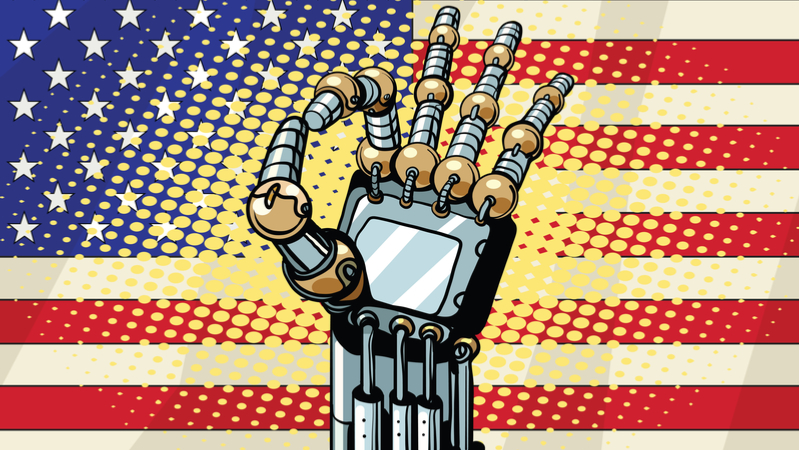
The potential of artificial intelligence opens up the abundant future of game-changing machine-based applications in science, medicine, national defense, business, and just about every other area. But getting there while maintaining the U.S. lead in AI research and development will hinge on two old-school constants of innovation: money and people.
The White House’s Interagency Select Committee on Artificial Intelligence, which was created in May, recently held its first meeting with the White House Office of Science and Technology Policy (OSTP), at which it outlined plans for supporting AI development. It created two subcommittees–one focusing on operations and implementation of machine learning and AI, the other on research and development (R&D)–while describing some of the key areas of government and private-sector operations where AI will have an impact.
The committee also recognized the essential roles government and human ability will play in moving forward on AI. “Delivering these benefits will require sustained Federal investment in AI research and a continued pipeline of technical talent,” the committee said in a statement after the meeting.
Government backing has been at the root of a lot of the technical marvels of everyday life, such as microchips, GPS, touch screens, Google’s search engine, and a little thing called the Internet, as well as a long list of innovations that have grown out of NASA’s space program and the National Institutes of Health’s support of pharmaceutical and biotech research. The private sector and academia also contributed significantly to their development, of course, but government funding has often supported new technologies through the research phase, before they started paying off commercially.
And although much of the employment focus on AI has been on the types of jobs it could take away, the real problem could be in finding people with AI-related skills. A Gartner report last fall projected that AI would eliminate 1.8 million jobs by 2020–but create 2.3 million more in the same timeframe. The challenge will be finding enough data scientists and engineers to fill the gap. Some businesses have developed AI “boot camps” to develop skills, and some universities have set up Massive Open Online Courses (MOOCs) to accelerate education, though finding the best approach to creating AI expertise is still in flux.
The Select Committee was set up under the National Science and Technology Council, whose leadership includes the heads of the National Science Foundation (NSF) and the Defense Advanced Research Projects Agency (DARPA), among other R&D leaders. The two new subcommittees include the Machine Learning and AI (MLAI) Subcommittee and the AI Interagency Working Group of the multi-agency Networking and Information Technology Research and Development Program, the primary source of Federal funding for technology research and development. AI has “tremendous potential to benefit the American people” the committee said, adding that “continued U.S. leadership in AI is critical to our national security and economic competitiveness.”
In its meeting, the committee discussed a few large-scale AI projects, including the Department of Defense’s new Joint Artificial Intelligence Center, which brings DoD’s approximately 600 AI projects (from the somewhat controversial Project Maven to geopolitical predictive analytics) under one roof. Other topics on the table were a new research partnership between NSF, DARPA, and the Department of Energy’s new Summit supercomputer. Summit is the world’s fastest machine, and is custom-made for AI applications.
But the committee also touched on other areas where AI is already having an impact, such as medicine, transportation, manufacturing, food distribution, disaster response, and financial transactions. Further advancements will lean heavily on contributions from industry and academia, but, as with other technologies, government has a significant role in laying the groundwork.
